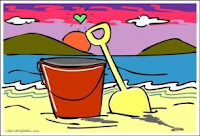 There used to be an era where most of us could drink water from faucets. We trust our water companies to provide us with clean potable water.
There used to be an era where most of us could drink water from faucets. We trust our water companies to provide us with clean potable water.They, on the other hand, trust their underground piping system and chlorine formulation to bring about tap water safely to every home.
Slowly over the years mineral deposits, brought about by the continuous flow of water, accumulate within the pipe’s walls. Pipe openings from residential installation and periodic maintenance repairs further introduce unwanted impurities.
If upset stomach eventually shows up as a frequent symptom, might as well refrain from drinking tap water. From here on there are three possible alternatives: diligent boiling, portable filtering system or bottled water.
 Boiling Water
Boiling WaterBoiling of water can be used as a means of disinfecting water but only as an emergency water treatment method. Though most bacteria, viruses, and pathogens are killed in the process of boiling, some are resistant and can even survive a few minutes of boiling.
But if access to potable water infrastructure is remote, boil water for at least 10 minutes.
 Water Filter
Water FilterA water filter cleanses tap water by means of a very fine “strainer”, a chemical process, a biological process, or even a combination of the three. Unlike a normal sieves or screens, filters remove particles much smaller than the holes through which the water passes.
There are a number of water filters available out there – from low cost carbon-based filters to very expensive ultra violet radiation systems.
All requires periodic maintenance so choose one that suits your budget.
 Bottled Water
Bottled WaterBottled water is potable or distilled drinking water packaged in plastic or glass bottles. They come in various sizes from small handheld bottles to large containers for water dispensers.
Bottled water is such a craze these days that even Coca-cola and Pepsi predict that water will create more revenue than their soda counterpart.




